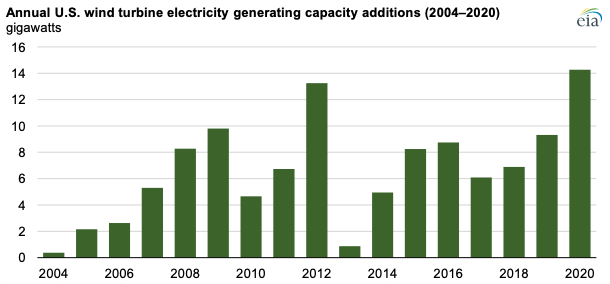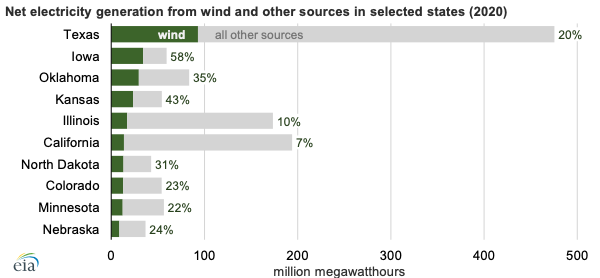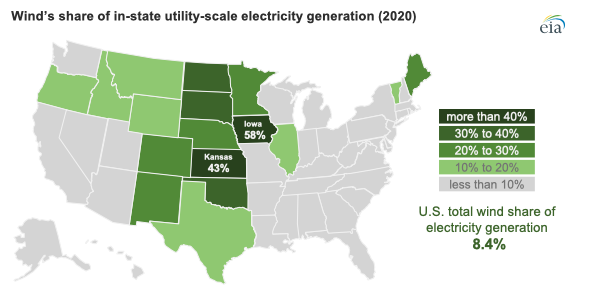In both 2019 and 2020, project developers in the United States installed more wind power capacity than any other generating technology. According to data recently published by the U.S. Energy Information Administration (EIA) in its Preliminary Monthly Electric Generator Inventory, annual wind turbine capacity additions in the United States set a record in 2020, totaling 14.2 gigawatts (GW) and surpassing the previous record of 13.2 GW added in 2012. After this record year for wind turbine capacity additions, total wind turbine capacity in the United States is now 118 GW.

The impending phaseout of the full value of the U.S. production tax credit (PTC) at the end of 2020 primarily drove investments in wind turbine capacity that year, just as previous tax credit reductions led to significant wind capacity additions in 2012 and 2019. In December 2020, Congress extended the PTC for another year.
Texas has the most wind turbine capacity among states: 30.2 GW were installed as of December 2020. In 2020, Texas generated more electricity from wind than the next three highest states (Iowa, Oklahoma, and Kansas) combined. However, Texas generates and consumes more total electricity than any other state, and wind remains slightly less than 20% of the state’s electricity generation mix.

In two other states—Iowa and Kansas—wind is the most prevalent source of in-state electricity generation. In both states, wind surpassed coal as the state’s top electricity generation source in 2019.

Nationally, 8.4% of utility-scale electricity generation in 2020 came from wind turbines. Many of the turbines added in late 2020 will contribute to increases in wind-powered electricity generation in 2021. EIA expects wind’s share of electricity generation to increase to 10% in 2021, according to forecasts in EIA’s most recent Short-Term Energy Outlook.
Principal contributors: Richard Bowers, Owen Comstock

Follow us on social media: